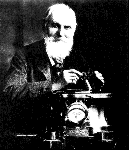We observe that there are 100 (degree) steps in the Centigrade scale between
freezing and boiling points, and 180 degree steps in the Fahrenheit scale.
This suggests a scale factor of 180/100 or 9/5.
Also, there is a difference in the lower starting points,
suggesting a translation factor of 32.
The formula is
f = (9/5)c + 32.
We notice that c = 0 maps to f = 32, and c = 100 maps to f = 212 as required.
• Fahrenheit scale: the scale of temperature measurement with freezing point at 32° and boiling point at 212°. Named after the German physicist Gabriel Fahrenheit (1686 – 1736).
• Centigrade scale: the scale of temperature measurement with freezing point at 0° and boiling point at 100°. The word ‘centigrade’ comes from the Latin and means 100 steps. • Celsius scale: another name for the Centigrade scale, named after the Swiss astonomer Anders Celsius • Kelvin scale: this scale has the same degree steps as the Centigrade scale, but 0° Kelvin is placed at absolute zero (–273.15° C). This means that there are no negative readings in the Kelvin scale. The scale is named after the British physicist Lord Kelvin (William Thomson) |
 In the Fahrenheit scale, water freezes at 32° and boils at 212°. In the more commonly used Centigrade scale, water freezes at 0° and boils at 100°.
In the Fahrenheit scale, water freezes at 32° and boils at 212°. In the more commonly used Centigrade scale, water freezes at 0° and boils at 100°.
 Use your library or the Internet to discover the origin of the names Fahrenheit, Centigrade and Celsius. What is the Celsius scale?
Use your library or the Internet to discover the origin of the names Fahrenheit, Centigrade and Celsius. What is the Celsius scale?